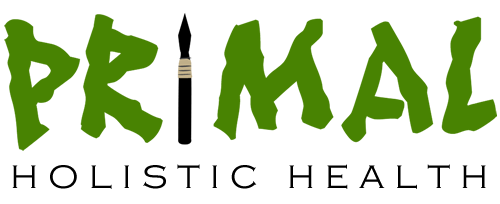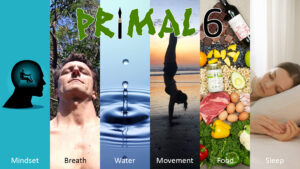This is a loose transcription of the video ‘Meditation Made Simple’
Brad: Hey guys, If you’ve read my article on Primal Health entitled ‘10 Easy Ways to Meditation‘ you would have read about some of the ways I’ve incorporated active and passive meditation into my life.
Traditional ‘passive’ meditation can take a long time to master. Today I want to take you through some basic focused breathing. Whilst basic in name, it’s powerful in its regular practice. So many of us reach for drugs, herbs and supplements to reduce our blood pressure and high resting heart rate, without ever considering the power of doing it through breath.
Meditation Made Simple
In this video I’m at a special place in Arizona, US called Watson Lake. I always like visiting this place when I’m here. It has a special energy, a vibe, a feeling it gives me when I visit. Hence it’s a great place to relax and meditate. Think of somewhere in your area where you could go to do the same. It then makes it easier to contemplate a beautiful setting when starting your own meditations, no matter where you are. Whether you’re in your living room or at work on a lunch break.
Best to watch this video in a comfortable place indoors or outdoors where you can be alone uninterrupted. When doing this again in the future it may be beneficial to set an alarm or use music of a pre-determined time length (eg: 5 min. or 10 min.).
Take a seat. Keep your spine erect. You could be sitting in a seat, or if on the ground, cross you legs or even try to sit like I am, in what’s called a ‘half lotus’ position. If you are flexible enough and have done it before, bring the other foot up into a full lotus position.
For now, keep your eyes open. Copy me by doing what’s called alternate nostril breathing . With your right hand, place your thumb over your right nostril, your next two fingers on your temple and and your fourth finger adjacent to your left nostril. Now slowly breathe in through your left nostril. Now block your left nostril with your fourth finger, unblock your right nostril with your thumb and breathe out though the right nostril. Now go in reverse. Breathe in through the right nostril, unblock the left nostril, block the right nostril, and breathe out the left. Let’s repeat this over and over for the next minute.
As you start to breathe in now, pay attention to the way you are breathing. Is your chest lifting up or your stomach getting fatter as you breathe in? You should feel your stomach distending or moving outwards as your lungs fill up with air. As you breathe out you should feel your stomach flatten as the air goes out of your lungs. This is indicating that your diaphragm muscle that sits below your lungs is doing its job properly. As you will see our babies and kids doing naturally before they’ve been conditioned to suck their stomach muscles in due to higher stomach body fat levels, bloating from foods that don’t agree with us and the social stigma associated with having a belly sticking out. If this feels like a backwards breathing pattern for you, don’t worry. Take your time. In several sessions it should start to feel normal to you. So many of us who are chest dominant breathers don’t realise that we are doing approximately 20,000 shoulder shrugs all day long to allow our lungs to breathe, when our diaphragm is not doing its job.
Now close your eyes. Continue to breathe the same way. Focus on deep, slow, controlled breathing through the nose. Breathing through the nose stimulates the nerves directly connected to the parasympathetic nervous system which helps us to produce hormones to grow, repair and digest. Breathe in and allow the stomach to fill up like a balloon. Breathe out and feel your stomach draw in like the balloon has popped. Drop your hand now from your nose. Interlock your fingers and place them on your lap. Continue to breathe alternating between nostrils. Even if it feels like both nostrils are working, just pretend it’s still happening. Try slowing down your breathing even more now and notice how your breathing comes thinner, shorter and eventually seems to disappear. Now try and alternate your breaths. Now it should hopefully seem possible.
Now, let’s try putting a visualisation with our breathing. Imagine with each exhalation, you are breathing out negative energy coloured red, and with each breath in, you’re inhaling positive healing energy the colour blue. Send your body a message “Everything is fine, everything is at peace. Relax….” Let’s continue to do this now for another minute. Breathe in, breathe out, “Everything is fine, everything is at peace. Relax….”
Now, next breath out, I want you to start to come back into your body and open your eyes up when you’re ready. Take in the environment in which you’re sitting and reflect on what you have just done in the last couple of minutes.
Now each time you try one of these forms of meditation, the experience will be different, and it will certainly take some practice to get good at it. Don’t feel discouraged if, in one session you experience a high, but then subsequent sessions aren’t as effective and your attention is scattered. You’ll certainly get better at it. It’s worth persisting with it. Meditation is definitely an awesome tool to be able to get good at using.
I hope you enjoyed the video and make meditation a daily practice.
Meditation Made Simple – April 2015








